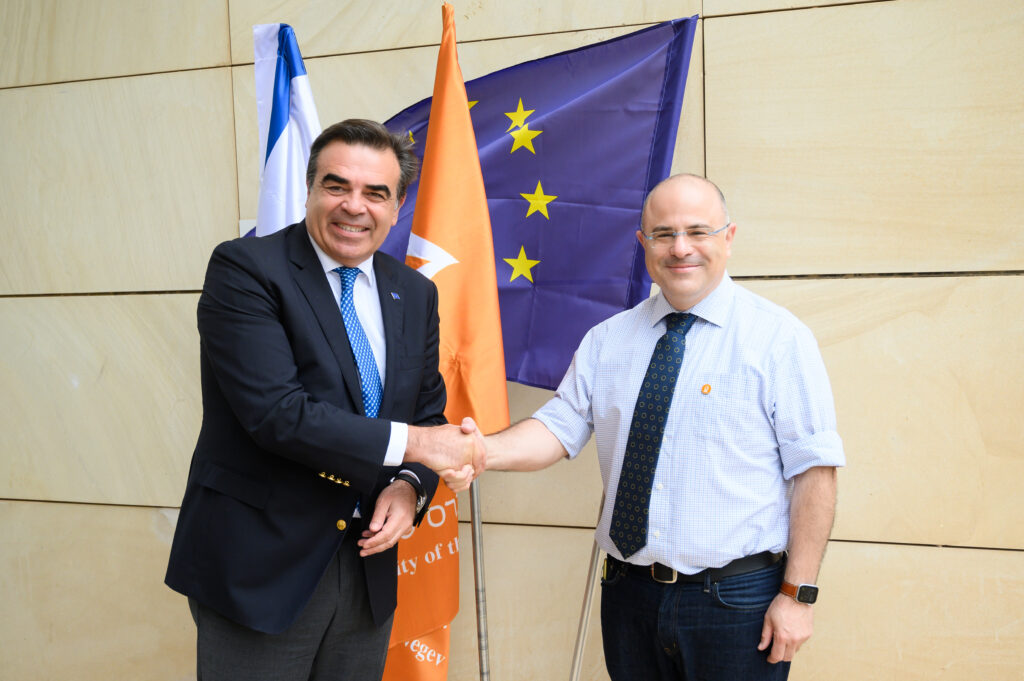
Why Can’t a Woman Play Tennis Like a Man?
Why Can’t a Woman Play Tennis Like a Man?
May 2, 2016
Business & Management, Press Releases
Changing court conditions to address differences in men’s and women’s play might make women’s tennis matches more competitive, according to a new study by Ben-Gurion University of the Negev and other Israeli researchers.
Many sports adapt rules and equipment to better meet the needs of female competitors. For example, the net is lower in women’s volleyball; basketballs are smaller; javelins are lighter; and hurdles are lower.
“Lowering court nets and playing with lighter tennis balls to accommodate physiological differences would help make women’s matches more competitive, with scores closer to the men’s,” says Dr. Mosi Rosenboim, of BGU’s Guilford Glazer Faculty of Business and Management.
“It is important to note that the current disparity is not related to competitive drive. It is usually attributed to differences in strength and speed, particularly when serving,” adds Dr. Alex Krumer from the University of St. Gallen in Switzerland. “While a men’s set is typically a duel of ace serves, resulting in back-and-forth game wins, women break more serves, which results in shorter sets.”
In the study, published in Journal of Sports Economics April issue, researchers examined the differences between men’s and women’s tournament scores from the 24 top men’s and 23 top women’s singles tournaments of the 2010 season. They evaluated the “tightness,” or competitiveness of a match according to how close the set scores were. Men’s sets were consistently closer (6-4, 7-5), while women’s sets tended to be more lopsided, with scores of 6-2, 6-1.
“The set-level analysis indicates that physical power, not competitiveness, is responsible for the different number of games per set,” says Dr. Offer Moshe Shapir from New York University in Shanghai. When researchers re-evaluated the 2010 tournaments and controlled for physical characteristics, such as height and body mass index, the gender gap in final scores completely disappeared. Comparing matches of men and women who were as similar as possible in physical stature yielded the same results: no gender differences in the number of games per set.
“It’s a much-debated subject in the tennis world,” the researchers state. “Level of competitiveness is one of the most important factors in the sports industry, where uncertain outcomes generate more interest from fans and higher ticket sales. This argument also contributes to an earnings gap between professional female and male tennis players.”
After analyzing 3,844 men’s sets and 3,034 women’s sets, Rosenboim and his colleagues, Krumer and Shapir, found that men’s scores were closer. For instance, when Novak Dojokovic beat Rafael Nadal in the men’s final of the 2012 Australian Open with a score of 5-7, 6-4, 6-2, 6-7, 7-5, the match lasted nearly six hours. The day before, Victoria Azarenka defeated Maria Sharapova 6-3, 6-0 in 1 hour and 22 minutes.
“If no changes are made, playing on the same court makes men’s and women’s tennis a completely different game,” Rosenboim says.
The researchers who contributed to “Gender, Competitiveness and Physical Characteristics: Evidence From Professional Tennis” include: Dr. Alex Krumer, currently from Swiss Institute for Empirical Economic Research, University of St. Gallen, Switzerland; Dr. Mosi Rosenboim, BGU Department of Management, Guilford Glazer Faculty of Business and Management, Beer-Sheva, Israel; and Dr. Offer Moshe Shapir, currently from New York University, Shanghai, Department of Business and Finance, China.
ABOUT AMERICANS FOR BEN-GURION UNIVERSITY
By supporting a world-class academic institution that not only nurtures the Negev, but also shares its expertise locally and globally, Americans for Ben-Gurion University engages a community of Americans who are committed to improving the world. David Ben-Gurion envisioned that Israel’s future would be forged in the Negev. The cutting-edge research carried out at Ben-Gurion University drives that vision by sustaining a desert Silicon Valley, with the “Stanford of the Negev” at its center. The Americans for Ben-Gurion University movement supports a 21st century unifying vision for Israel by rallying around BGU’s remarkable work and role as an apolitical beacon of light in the Negev desert.
About Ben-Gurion University of the Negev
Ben-Gurion University of the Negev embraces the endless potential we have as individuals and as a commonality to adapt and to thrive in changing environments. Inspired by our location in the desert, we aim to discover, to create, and to develop solutions to dynamic challenges, to pose questions that have yet to be asked, and to push beyond the boundaries of the commonly accepted and possible.
We are proud to be a central force for inclusion, diversity and innovation in Israel, and we strive to extend the Negev’s potential and our entrepreneurial spirit throughout the world. For example, the multi-disciplinary School for Sustainability and Climate Change at BGU leverages over 50 years of expertise on living and thriving in the desert into scalable solutions for people everywhere.
BGU at a glance:
20,000 students | 800 senior faculty | 3 campuses | 6 faculties: humanities & social sciences, health sciences, engineering sciences, natural sciences, business & management, and desert research.
For all press inquiries, please contact:
James Fattal, J Cubed Communications
516.289.1496




